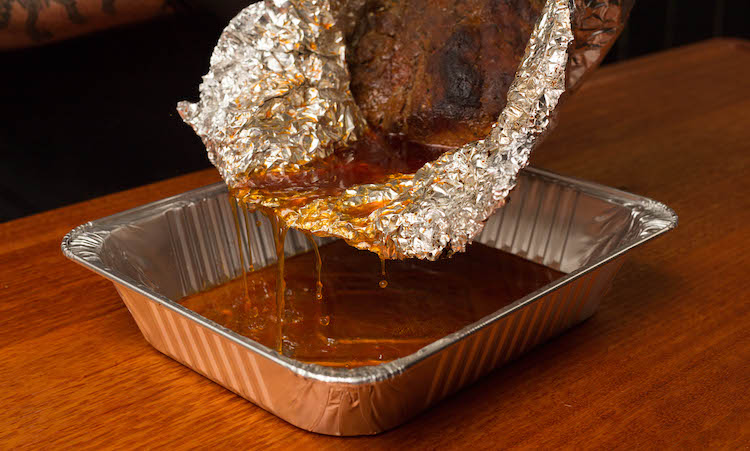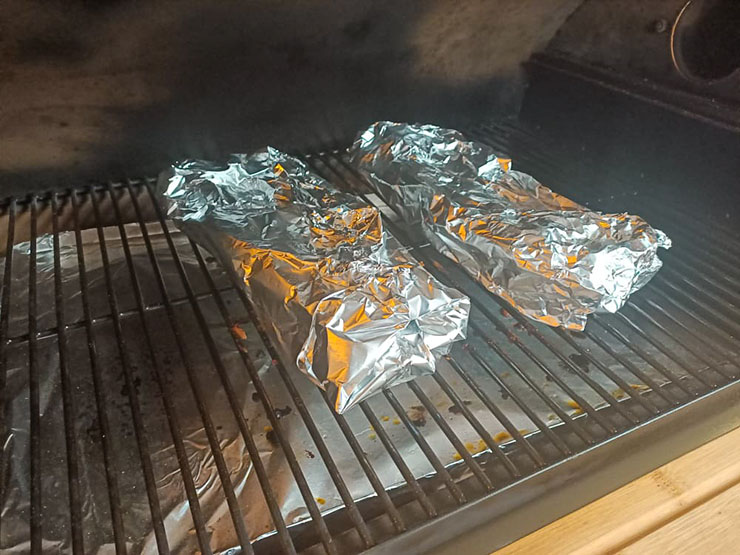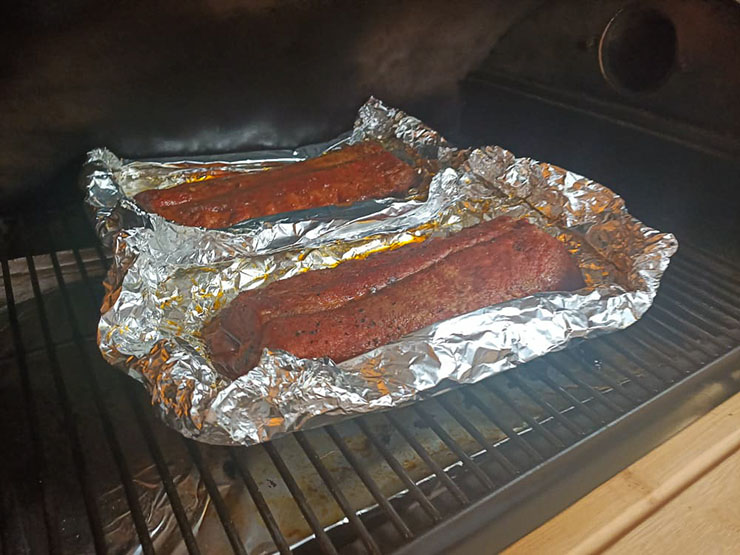When you are smoking meat, it’s common practice to wrap the meat about halfway through your smoke.
In addition to hastening the cooking process, wrapping helps retain moisture and keep your meat tender during the last few hours of cooking.
What’s the difference between those who insist on using butcher paper and those who prefer to wrap in aluminum foil?
I’ll weigh the advantages and disadvantages of each choice today, and I’ll also share my preferences for various cuts of meat. Butcher Paper vs Foil: Which is better?.
So, you’ve decided to take the plunge and smoke a turkey? That’s awesome! Smoking a turkey is a fantastic way to infuse it with flavor and achieve that juicy, tender texture that’ll have your guests raving But before you get started, there’s one crucial step you need to know: wrapping your turkey in butcher paper
Why Wrap a Turkey in Butcher Paper?
Wrapping a turkey in butcher paper serves two main purposes:
- It helps retain moisture: As the turkey smokes, the butcher paper traps the moisture inside, preventing it from drying out and becoming tough. This is especially important for turkeys, which tend to be leaner than other meats.
- It creates a more even cook: Butcher paper helps regulate the temperature inside the smoker, ensuring that the turkey cooks evenly throughout. This prevents those dreaded dry spots and ensures that every bite is juicy and flavorful.
Now, let’s get down to the nitty-gritty of how to wrap a turkey in butcher paper:
Gather Your Supplies:
- Butcher paper: You’ll need a large sheet of butcher paper, big enough to completely wrap your turkey.
- Scissors: For cutting the butcher paper.
- Spray bottle: Filled with water or apple cider vinegar (optional).
- Thermometer: To monitor the internal temperature of your turkey.
The Wrapping Process:
- Cut the paper: Cut a sheet of butcher paper large enough to completely wrap your turkey, leaving some extra overhang on each side.
- Place the turkey: Lay the butcher paper on a flat surface and place your seasoned turkey on one end.
- Spritz it up: If desired, lightly spritz the turkey with water or apple cider vinegar. This will help keep the turkey moist and prevent it from sticking to the paper.
- Wrap it tight: Fold one side of the butcher paper over the turkey, then fold the other side over, overlapping the first fold. Make sure the paper is snug against the turkey, but not so tight that it tears.
- Tuck and roll: Fold the ends of the paper over the seam and roll the paper tightly towards the other end of the turkey. This will create a sealed package that traps the moisture and smoke.
- Back to the smoker: Place the wrapped turkey back in the smoker and continue cooking until it reaches the desired internal temperature. For a 12-14 pound turkey, this will typically take an additional 1-2 hours at 225°F.
Pro Tips for Butcher Paper Wrapping Prowess:
- Don’t over-wrap: While you want the paper to be snug, avoid over-wrapping, as this can restrict airflow and prevent the turkey from cooking evenly.
- Double up for larger turkeys: For turkeys over 16 pounds, consider using two sheets of butcher paper for extra strength and coverage.
- Unwrap and rest: Once the turkey is done cooking, let it rest for at least 30 minutes before unwrapping. This allows the juices to redistribute, resulting in a more tender and flavorful bird.
There you have it, folks! Now you know how to wrap a turkey in butcher paper like a pro. With this technique, you’ll be smokin’ turkeys that are juicy, flavorful, and guaranteed to impress your friends and family. So, fire up your smoker, grab some butcher paper, and get ready to experience the magic of smoked turkey!
Aluminum foil: “The Texas Crutch”
Now, this is where the debate comes into play. It’s time to wrap your meat – are you reaching for the butcher paper or the aluminum foil?.
Often referred to as the “Texas Crutch,” aluminum foil is a common option due to its greater accessibility compared to butcher paper. While most American homes always have aluminum foil on hand, they might not be as quick to stock up on a roll of butcher paper.

Foil is relatively cheap and easy to use, plus it can really help speed up your cook. The foil traps the moisture in the meat and acts as a heat insulator in the smoker, allowing the meat to steam as it cooks through.
The “Texas Crutch” is kind of a jab towards Texan pitmasters, but it’s one that I embrace. It’s referred to as the “crutch” because it expedites the cooking process and helps you get through a stall when you’re smoking slowly.
Although some people will always be hateful, the “Texas Crutch” can be quite helpful when attempting to get your meat through the toughest part of cooking!
The fact that foil retains all of the meat’s juices allows the meat to sit and braise in its own juices as it cooks, which is another fantastic feature of foil.

The biggest argument AGAINST using aluminum foil is definitely the fact that it can compromise your bark. If you cover your brisket with foil too soon, the bark may steam and come off easily.
Making sure your bark is nice and set before wrapping is something I advise if you plan to use aluminum foil. This may occur at 165°F or wait until internal temperature reaches 185°F, but it requires a somewhat trained eye.
One final tip, I recommend investing in a big roll of heavy-duty foil. It’s great for wrapping things like pork ribs that have sharp bones that can puncture your foil.
Pork ribs: aluminum foil
I always use foil when I wrap my pork ribs – IF I even wrap them at all. Some say that using butcher paper is the best option, but I fail to see the reasoning behind that.

Aluminum foil is perfect for pork ribs. It lets the ribs cook in their own juices and enhances the flavor of the butter and sauce, which I like to add halfway through the smoking process, as in our recipe for 3-2-1 smoked ribs.
Since you usually don’t worry about a “bark” when cooking pork ribs, the steam produced by using aluminum foil doesn’t cause any problems.

Should you decide to wrap your ribs, keep in mind that the aluminum foil will act as an insulator, which will unavoidably accelerate the cooking process.
If you are accustomed to smoking your ribs without a wrapper and you choose to use foil for the first time, just remember that the cooking process will cause the ribs to cook more quickly than you would anticipate.
#ad Smoked Turkey Breasts using Reynolds Kitchens Butcher Paper
FAQ
Do you wrap a turkey in butcher paper while smoking?
Should you wrap your turkey when smoking?
Is it better to wrap meat in foil or butcher paper?
